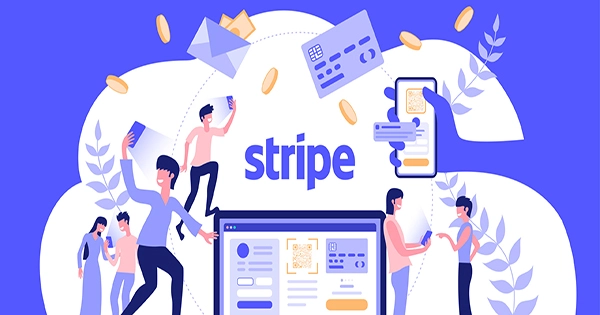Stripe, the payments behemoth valued at $95 billion a year ago and now rumored to be on the verge of an IPO, announced a new product today that fills in some significant gaps in its play to be the financial services layer for merchants and other businesses whose models are based on enabling transactions. Financial Connections, which will allow Stripe’s clients to connect directly to their customers’ bank accounts in order to acquire financial data and speed up or perform specific types of transactions, is being unveiled. Verifying accounts for payments and payouts; checking balances prior to a payment to ensure there is adequate money in the account, and confirming account ownership are just a few examples.
These details may then be used to assist evaluate risk for loans, track spending trends, and automatically pay bills, among other things — in other words, financial data that’s relevant or required to conduct financial transactions using Stripe Connect, ACH payments, or Stripe Capital-powered loans. When Stripe’s clients are requested, they will provide their bank account information and receive detailed instructions on how it will be used, according to Stripe. As a side issue, it will be fascinating to observe if American customers are comfortable revealing that information in settings where it has not previously been shared.
Stripe claims that the service will function with over 90% of all bank accounts in the United States when it launches. It will be priced on a pay-as-you-go basis — bank account verifications and account information will cost $1.50 each API call, account balance retrieval will cost 10 cents per API call, and transaction pulls will cost TBD — and larger clients may purchase an enterprise contract. Stripe declined to comment on when and if Financial Connections might be expanded to additional regions, which is understandable considering how different banking systems are in different countries.
Financial Connections arrives at an exciting time in the digital payments sector. E-commerce has undoubtedly generated a market for making online payments more convenient. While this opened the way to digital wallets like PayPal’s and certain direct payments from banks in some countries, many of the benefits of that expansion have been funneled towards card-based services. However, as the industry has progressed, we’ve seen a bigger proliferation of technology, services, laws, and customer demand for more. Digital banking, investing, cryptocurrency trading, innovative techniques to obtaining loans, and controlling spending are just a few instances of how digital services have advanced, as have our expectations of them.
And e-commerce hasn’t been static: buy now, pay later services, and a slew of other innovations have joined the market to provide more flexible services in the face of more competition and slimmer margins. More and more of them are appearing all the time. I just wrote about an intriguing startup called Kevin (well, kevin.) that’s developing a new set of payment rails and APIs for account-to-account payments that connect directly to bank accounts, skipping card rails and other difficult-to-implement account-to-account payment methods.
Financial Connections is a timely product for Stripe to debut in this setting. It’s one of a slew of new services (such as Kevin) that are ushering in a more automated approach to digital transactions and related financial services. While organizations could previously obtain transaction data from a bank, this may now be done in a faster and more automated manner. In a statement, Clara Liang, Stripe’s business lead, said, “Businesses have been asking us for a simple, secure way to connect to and verify their customers’ bank accounts.” “Stripe Financial Connections satisfies this requirement.”
Indeed, it addresses the needs of Stripe’s current customers; more importantly, it creates a tighter ecosystem of services around products that they already use, a one-stop-shop that eliminates the need for them to rely on third-party tools — such as those provided by Plaid — to integrate that functionality. Stripe has been acquiring companies to fill in some of the gaps in its platform — for example, almost exactly a year ago, it acquired TaxJar to help automatically calculate sales tax and provide related tools to its customers — but it appears that Financial Connections was built in-house but powered by MX and Finicity as pointed out by Mary Ann here.
Stripe’s selling argument for these technologies is that they enable consumers conduct more transactions, in addition to a more seamless interface with its other products. It claims that Connect clients who have been using the service for a while have seen a 75 percent reduction in payout failures, and that early Capital users are seeing 55 percent larger loan offers as a result of the additional data they’re utilizing to make decisions.
All of this means that Stripe’s platform will see an increase in transactions. Any digital payment might have razor-thin margins, which is one reason why even a firm that appears to be booming and generating a lot of business could nevertheless fail: Stripe is doing smart business by adding in a lot of extra valued-added services in the hopes of them being taken up by customers (and customers’ customers), as it is doing here.














